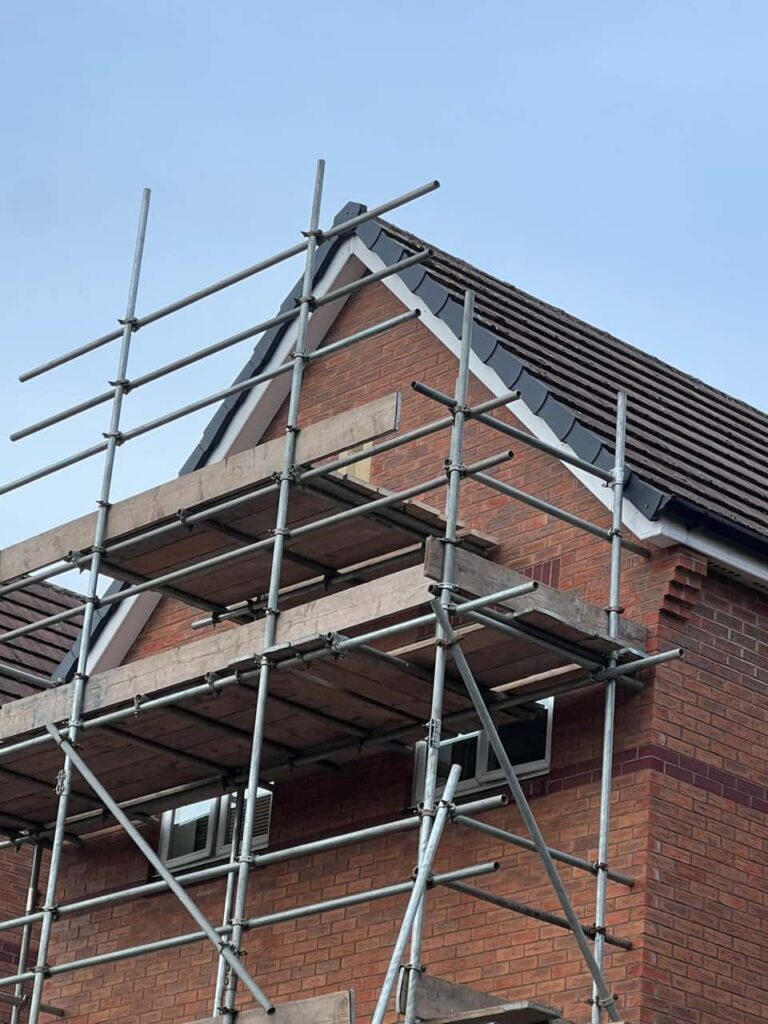Introduction: Re-roofing is a significant home improvement project that can enhance the appearance and functionality of your property. However, it’s essential to prioritise safety throughout the process to ensure the well-being of your home and your family. This blog post discusses key safety considerations for a successful and secure re-roofing project.
1. Hire a Professional Roofing Contractor:
One of the most critical steps in ensuring re-roofing safety is selecting a reputable and experienced roofing contractor. A professional contractor will have the expertise, equipment, and training to handle the project safely and efficiently. Before hiring, verify their credentials, insurance coverage, and previous work.
2. Work with Safety Equipment:
Both roofing professionals and homeowners should wear appropriate safety gear, including helmets, safety glasses, gloves, and non-slip footwear. Fall protection equipment, such as harnesses and safety lines, should be used when working on elevated surfaces.
3. Secure the Work Area:
Before starting the re-roofing project, ensure that the work area is clear of potential hazards. Remove any debris, tools, or materials that could lead to accidents or falls. Mark off the work zone to prevent unauthorised access and keep family members and pets at a safe distance.
4. Weather Awareness:
Monitor weather conditions closely before and during the re-roofing project. Adverse weather, such as rain, wind, or snow, can create unsafe working conditions and increase the risk of accidents. Postpone the project if weather conditions are unfavourable.
5. Identify and Address Structural Weaknesses:
Before beginning re-roofing, conduct a thorough inspection of the roof’s structure. Address structural weaknesses, such as rotten wood or compromised supports, before work commences. Strengthening the roof’s foundation contributes to a safer overall project.
6. Avoid Electrical Hazards:
Roofing work often involves using power tools and equipment. Ensure that power sources are properly grounded, and avoid using tools near power lines or electrical components to prevent electrical hazards.
7. Use Ladders Safely:
If ladders are required for the project, use them correctly and securely. Place ladders on stable surfaces and ensure they’re properly extended and secured to prevent accidents while climbing.
8. Prevent Falls:
Falls are a significant risk during re-roofing. Use scaffolding or platforms when possible to provide a secure working surface. When working on steep roofs, consider using safety harnesses and fall arrest systems to minimise the risk of accidents.
9. Dispose of Materials Properly:
Dispose of old roofing materials, debris, and waste promptly and appropriately. Keep the work area clean to prevent tripping hazards and maintain a safe environment.
10. Communicate Safety Procedures:
If you’re hiring a professional roofing contractor, ensure they have a comprehensive safety plan. If you’re tackling the project yourself, communicate safety procedures to anyone assisting you and ensure everyone understands their roles and responsibilities.
Conclusion: Re-roofing can significantly enhance the value and comfort of your home, but safety should always be a top priority. By adhering to these safety guidelines and working with experienced professionals, you can confidently complete your re-roofing project, knowing that you’ve taken the necessary steps to protect your home and your family.
Call us on: 0115 647 1193
Click here to find out more about Hucknall Roofing Repairs
Click here to complete our contact form and see how we can help with your roofing needs.

